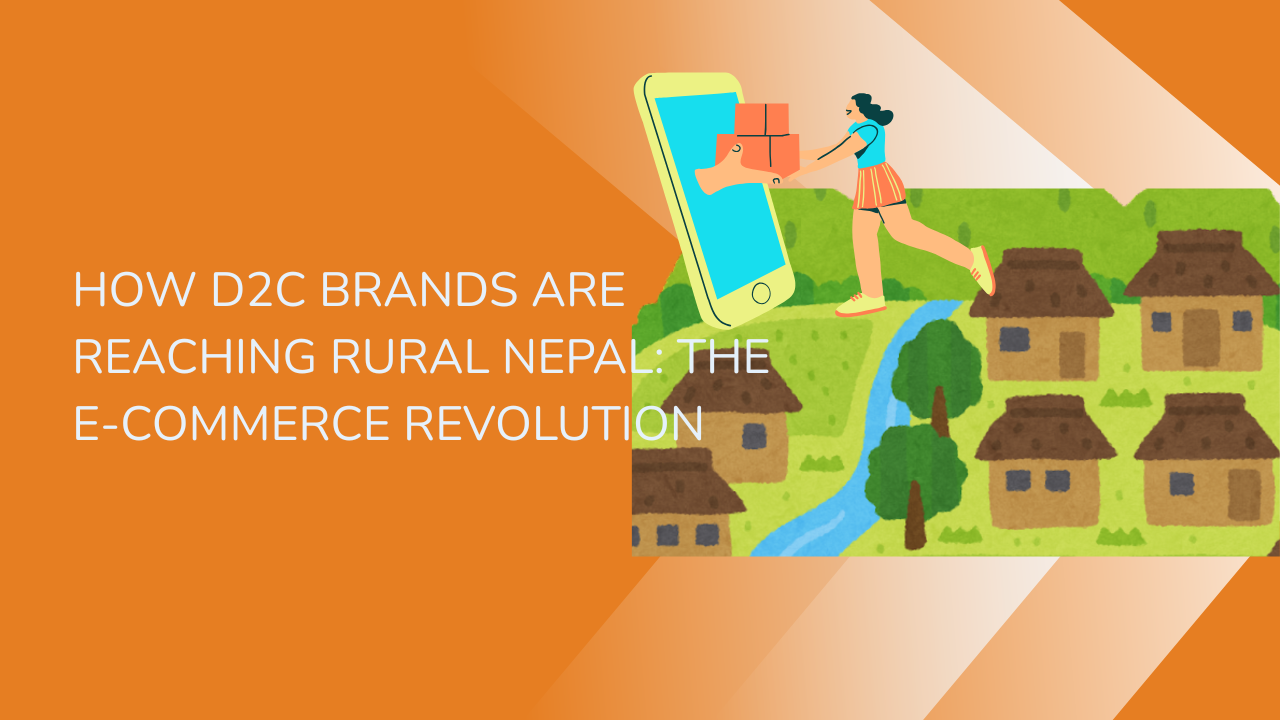Share this Article
Nepal’s retail sector has experienced a significant shift over the past decade, as digital commerce continues to revolutionize the way people shop. The emergence of online stores has posed challenges for conventional brick-and-mortar businesses, forcing them to compete with the convenience and efficiency of eCommerce. As technology advances and consumer behavior evolves, Nepal’s traditional retail industry is struggling to keep pace. While physical stores remain relevant in certain aspects, the rapid expansion of online shopping raises the question of whether traditional retail in Nepal can sustain itself or if it is destined to fade away.
The Growth of eCommerce in Nepal
Several key factors have contributed to the exponential rise of online shopping in Nepal:
- Expanding Internet Accessibility: A growing number of Nepalis now have access to affordable internet and smartphones, making eCommerce platforms more widely available to consumers.
- Advancements in Digital Payment Solutions: The popularity of mobile payment platforms such as eSewa, Khalti, and IME Pay has made digital transactions seamless, boosting consumer confidence in online shopping.
- Evolving Consumer Preferences: Younger generations, particularly millennials and Gen Z, prefer the flexibility and ease of shopping from mobile apps and websites rather than visiting physical stores.
- Impact of the COVID-19 Pandemic: The pandemic dramatically accelerated Nepal’s eCommerce adoption, as lockdowns left consumers with no choice but to rely on online platforms for their shopping needs.
- Improved Logistics and Delivery Networks: Companies such as Daraz, SastoDeal, and HamroBazar have invested heavily in efficient logistics, ensuring that products reach customers quickly, even in rural areas.
Why Online Shopping is Gaining Popularity Over Traditional Retail?
- Unmatched Convenience: Consumers can shop from the comfort of their homes without the hassle of traveling to physical stores.
- Diverse Product Offerings: Online marketplaces provide a broader selection of goods, often at better prices than traditional retailers.
- Easy Price Comparisons: Shoppers can compare prices across multiple eCommerce platforms to find the most cost-effective deals.
- Frequent Discounts and Promotions: Online stores regularly offer discounts, cashback rewards, and seasonal sales, making them more appealing to price-conscious consumers.
- AI-Enhanced Shopping Experience: Advanced algorithms personalize recommendations, helping customers find products suited to their preferences and needs.
Challenges Confronting Traditional Retailers in Nepal
Despite their longstanding presence, brick-and-mortar stores are finding it increasingly difficult to compete with online businesses due to several obstacles:
- High Operational Expenses: Rent, utilities, wages, and inventory costs make physical retail stores more expensive to run compared to eCommerce businesses.
- Limited Customer Reach: Physical stores can only serve local customers, while online stores can cater to buyers from all over Nepal.
- Shifting Consumer Expectations: Customers now demand home delivery, fast service, and easy returns—services that many traditional retailers struggle to provide.
- Slow Digital Adoption: Many small businesses in Nepal lack the technical expertise or financial resources to establish an online presence.
- Economic Uncertainty: Inflation and economic slowdowns have made it increasingly difficult for brick-and-mortar stores to remain profitable.
How Traditional Retailers Can Adapt to the Digital Age?
While eCommerce continues to expand, traditional retailers can take steps to modernize their businesses and remain competitive:
- Adopting an Omni-Channel Approach: Retailers can integrate both online and offline sales models to reach a broader customer base.
- Building a Digital Presence: Establishing an eCommerce website or utilizing social media platforms can help retailers attract online customers.
- Introducing Click-and-Collect Services: Offering customers the option to order online and pick up in-store can create a seamless shopping experience.
- Enhancing In-Store Experiences: Brick-and-mortar stores can differentiate themselves by providing personalized customer service and interactive shopping experiences.
- Partnering with eCommerce Marketplaces: Retailers can collaborate with established platforms like Daraz, SastoDeal, or HamroBazar to tap into the growing online market.
The Future of Retail in Nepal
While traditional retail is in decline, it is unlikely to disappear entirely. Instead, Nepal’s retail sector is expected to evolve into a hybrid model, where physical stores and online platforms coexist. Businesses that successfully integrate technology into their operations while maintaining the advantages of in-person shopping—such as customer engagement and immediate product availability—will be better positioned to thrive in the evolving marketplace.
Conclusion
The rise of eCommerce in Nepal marks a significant transformation in the retail industry. As more consumers shift towards online shopping, traditional retailers must embrace digital innovations to stay relevant. By leveraging digital solutions, enhancing customer engagement, and adapting to new shopping trends, physical stores can still maintain a presence in Nepal’s retail landscape. The future of retail in Nepal will depend on how well businesses balance tradition with digital advancement, ultimately shaping a retail ecosystem where both online and offline shopping experiences coexist.
Categories:
E-commerce Tips & Tutorials
Tags:
Online Store in Nepal
,
local businesses
,
Web
,
Nepali businesses
,
key trends
,
Starting an online store
,
Cash on Delivery vs. Online Pa
,
(COD) vs Online Payment
,
GrowOnlineNepal
,
ShopOnlineNepal
,
OnlineSellingNepal
,
StartupNepal
,
DigitalTransformation
,
FutureOfCommerce
,
OnlineSales
,
GrowYourStore







